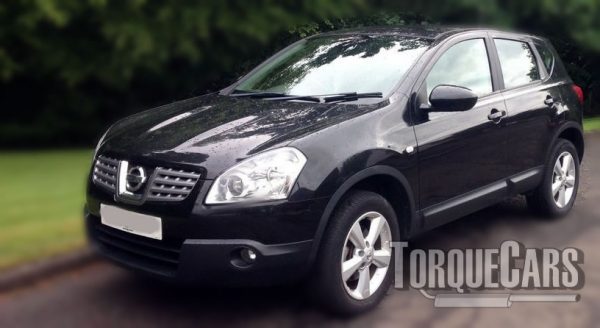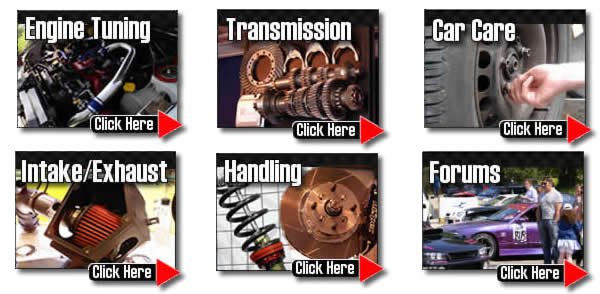Nissan Qashqai Tuning
"Spending Cash on Qashqai upgrade!"
The J10 was released in 2006, and Nissan had no idea what a resounding success this model would be.
It seemed the world was crying out for a decent crossover SUV. In the USA the Qashqai is badged as the Rogue Sport and in Japan and Australia it was labelled the Dualis.
The Qashqai is very capable, nice to drive and a practical family vehicle.
Some of the smaller engines feel a little under powered, but we guess that's why your here on our tuning site, looking for improvements and modifications to improve your Qashqai.
So let's look at Qashqai tuning and show our top modification picks. Nissan Qashqais have loads of potential and with carefully picked enhancements you can substantially improve your driving fun.

You can do a lot to improve the performance of your Qashqai with our step by step tuning tips. With the right mods your Qashqai can be transformed into an awesome motor.
Don't waste money, do your homework and follow our unbiased guides to each performance upgrade to avoid wasting money.

Handling modifications are the thing most do first for the Qashqai. We suggest that you fit modified suspension and lower the car by 30-35mm. Larger drops require arch work - especially on models already equipped with performance suspension.
Top end power should be your overall aim on the Qashqai with a nice fat peak torque band.
Thankfully with even the smaller engine sizes, especially when turbocharged, you can increase power but you get more of a return on your investment with the larger more powerful engines.
Engine swaps are still one of the easiest ways to dramatically increase power and give you more scope for tuning.
Power mods.
These are the modified kits are usually fitted by our members, decide how far you wish to go in your tuning project before you get started.
First generation engine range (2006-2013)
- 1.6 L HR16DE I4 (petrol)
- 2.0 L MR20DE I4 (petrol)
- 1.5 L K9K I4 (diesel)
- 1.6 L R9M I4 (diesel)
- 2.0 L M9R I4 (diesel)
Second generation Engines.
The J11 was released in 2013 and brought many revisions and improvements over the Mk1 including a new engine range, offering more power and better economy.
- 1.2 L turbo I4 (petrol) 114 bhp 140 ft⋅lb
- 1.6 L I4 (petrol) 161 bhp 177 ft⋅lb
- 2.0 L MR20DE I4 (petrol) 148 bhp 148 ft⋅lb
- 1.5 L Renault K9K I4 (diesel) 108 bhp 192 ft⋅lb
- 1.6 L I4 (diesel) 129 bhp 236 ft⋅lbf
Getting the right sports mods for your planned usage of the car is a time and money saver. Stage 3 (competition) mods just won't work well on the road difficult in stop start traffic.
Please watch our introduction Video tutorial to car tuning. Be sure to subscribe and support our new channel.
How to tune your car
- Improve the handling
Focus on Suspension improvements, such as coilovers and make sure the bushings are in good order and that the alignment is correct. Then focus on improving the brakes, with a big disk brake conversion kit and fast road brake pads.
- Remove restrictions
Focus on the intake and exhaust with filters being the common point of restriction in a tuned car. Intercoolers may also become restrictive on turbo engines so this may also need to be uprated.
- Burn more fuel & air
Increase the fuelling so it matches the air coming into the engine. The ratio is important so you need to improve the fuel pump and injectors, so the head mods, big valve conversions, fast road camshafts and forced induction upgrades extra supply of air is adequately met.
- Test and replace any weak parts
Weak areas are commonly the clutch, the turbocharger and pistons and crankshaft in a highly tuned engine. Makes sure these components will cope with your power aspirations.
- The Tune or Remap
A cars ECU controls the fuel, timing, spark and even the turbo in some cases, so to fully extract your gains you should remap the car last and this will fully release the power. Some cars are easy to map, and others require piggyback ECU's or aftermarket ECU's but this is the most vital step of your tuning project.
Modifying to Stage 1:
Panel air filter, Remap, Sports exhaust, Alloy wheels, Lighter flywheel, Suspension upgrade (drop 30-40mm).
Modifying to Stage 2:
high flow fuel injector, Power/Sport clutch, Ported and polished head, Fast road cam, fuel pump upgrades.
Modifying to Stage 3:
Adding or upgrading forced induction (turbo/supercharger), Sports gearbox, Competition cam, Internal engine upgrades (pistons/head/valves), Engine balancing.
You should keep as much low end power as possible and aim to achieve a long power band across the rev range rather than a narrow top end power hike.
The whole point of our advice is to give a limited introduction of car tuning upgrades and point you in the right direction, our forum is the place to go for detailed advice and tips on your modified car project, the best uprated modifications and all aspects of modding cars.One of the most cost effective mechanical uprated modifications you can do on your NASP engine is to fit a fast road camshaft .
The intake and exhaust flow play a large part in your cars power band, but be careful here, getting this wrong can upset the idle and make the car impossible to drive in traffic. You'd need to follow a camshaft upgrade with other mods and finish with a remap to fully release the power gain.You will need to ensure that the engine is not starved of fuel so will need to uprate the fuelling.
If you find you experience flat spots and power surges after your uprated parts you should check the fuelling and try a higher octane fuel as well. Uprated injectors will enable you to supply sufficient fuel to the engine. Uprate the fuel pump to cope with the extra fuel requirements of your tuned Qashqais uprated injectors.
Intake and Exhaust Tuning.
The next area for modification is the intake and exhaust. Contrary to popular belief there is usually a small if any power gain to be had by fitting an induction kit, they only work well and are recommended after you increase the engines power to the point where the standard air intake box cannot cope! Maximum power gains come from a full induction kit with a cold air feed on heavily tuned engines, this can be sited within an air box but a performance panel filter should suffice for most applications. TorqueCars suggest you use a panel air filter as these are easy to clean and maintain and generally perform better than paper ones.
Sports exhausts can help increase the flow of air through the engine. But if the exhaust is too large, ie: over 2.5 inches bore, you will lose much of the exhaust flow rate and end up lacking power and torque.
Getting the head flowed (ported and polished) will allow you to get more air into each cylinder. This is definitely a job for a professional with a flow bench. Your clutch can lose you loads of power as the power goes up if it starts to suffer and the standard clutches are only ever good for power gains of up to 43%. Fit an uprated clutch to avoid power loss through the transmission. NASP engines do not achieve big power gains if you remap them, unless you have done extensive modifications. With turbocharged engines this is another story. A remapped turbo will give significant power gains and fully release the potential power of the engine.
We've also seen some tuners toying with twincharging applications and making some impressively high power hikes.
Despite the large cost involved adding forced induction to a NASP engine will give large power gains. Superchargers are generally easier to add than a turbo. It is difficult to map fuelling with a turbo as the boost increases exponentially with revs.
It is easier to map a supercharger because the boost is correlating to engine speed on a linear curve. Decreasing the engines compression ratio will allow you to add forced induction, water injection may also help prevent detonation.
Alloy wheel upgrades.
Alloy wheels will help the brake cooling and are usually less heavy than steel ones. Please note that although they can look cool on the Qashqai big alloys will actually decrease your performance. The larger you go the lower your acceleration will be - this to the change in your effective final drive ratio.
For this reason endeavour to keep the overall rolling diameter of the wheel the OEM setup. In all cases we do not recommend going above 19 inches.
Putting the wider wheels and widening the track of the Qashqai significantly improves handling and grip, when pared with the correct suspension geometry and settings.
For more information on Tuning your car please join us in our friendly forum where you can discuss Qashqai options in more detail with our Qashqai owners. It would also be worth reading our unbiased Nissan tuning articles to get a full grasp of the benefits and drawbacks of each modification.
Please help us improve these tips by sending us your feedback in the comments box below. We love to hear what our visitors have got up to and which mods work best for them on each model of car. Comments are used to improve the accuracy of these articles which are continually updated.
If you liked this page please share it with your friends, drop a link to it in your favourite forum or use the bookmarking options to save it to your social media profile.
Check out TorqueCars new YouTube channel, and see their awesome new content...
Feedback
Please use our forums if you wish to ask a tuning question, and please note we do not sell parts or services, we are just an online magazine.
Help us improve, leave a suggestion or tip
